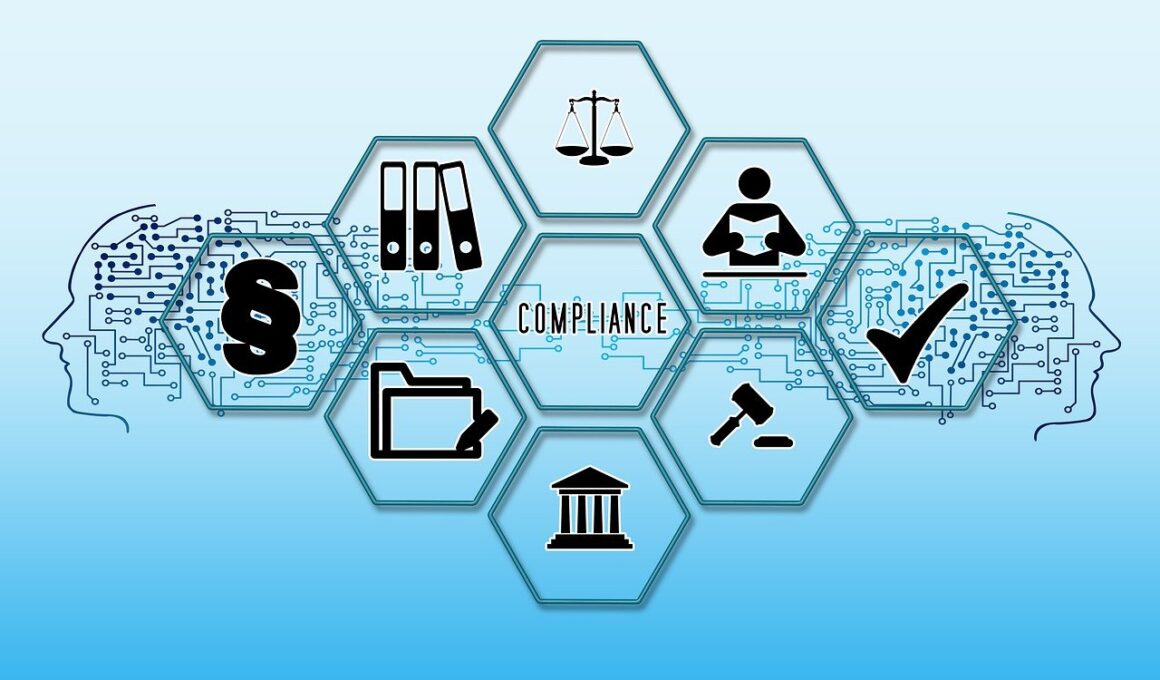Role of Technology in Compliance Education and Training
In today’s rapidly evolving regulatory landscape, technology plays a pivotal role in enhancing compliance education and training. Organizations are adopting new technological solutions that cater to the specific needs of compliance training. These tools facilitate real-time updates to training materials, ensuring that employees are always informed about the latest regulations and policies. Furthermore, elearning platforms can provide a flexible learning environment that allows employees to engage with the material at their own pace. This adaptability ensures better retention and comprehension of the content. Established compliance programs have reported significant improvements in employee engagement through interactive eLearning modules that leverage multimedia elements. Additionally, online compliance training provides analytics that allow organizations to track progress and effectiveness, identifying areas where further training may be required. It leads to a better understanding of compliance obligations and fosters a culture of accountability within the organization. Ultimately, by harnessing the use of technology in compliance training and education, businesses can enhance their compliance culture, reduce risk, and ensure a more robust understanding of the regulations governing their industries. Leveraging digital platforms is essential for a comprehensive approach to compliance education.
As businesses continue to navigate the complexities of compliance, the integration of technology into educational strategies becomes increasingly crucial. One of the most significant advancements in compliance training is the use of artificial intelligence (AI) in developing tailored learning experiences. AI algorithms can assess an individual’s learning style and adapt the training content to suit their specific needs. This personalized approach not only enhances engagement but also helps ensure that employees fully grasp complex regulatory requirements. Moreover, virtual reality (VR) and augmented reality (AR) technologies present revolutionary possibilities for immersive training experiences. These technologies can simulate real-world scenarios where employees encounter compliance challenges, enabling them to practice and apply their knowledge in a controlled environment. This hands-on interaction can dramatically enrich the learning experience, leading to improved skills and confidence in dealing with compliance-related issues. The combination of AI, VR, and AR allows organizations to provide training that resonates with a diverse workforce and caters to various learning preferences. As these technologies continue to evolve, their potential to transform compliance education and training will only increase, ensuring that organizations remain compliant and proactive in their regulatory adherence.
Another critical aspect of incorporating technology in compliance education involves the ability to provide immediate feedback. Traditional training methods often lack instant evaluation, leading to less engaging experiences. Online platforms can utilize quizzes and assessments that offer participants immediate results. Such tools effectively highlight strengths and weaknesses, allowing learners to focus on areas needing improvement. Furthermore, real-time feedback helps reinforce knowledge immediately after training sessions. Additionally, technology facilitates the continual refreshment of training content to keep it relevant. As regulations frequently change, having an automated system that updates learning materials can reduce compliance risks. Organizations can also use webinars and live streaming to provide real-time training sessions, ensuring that employees receive information directly from experts. This live interaction can clarify any doubts and enhance understanding in a collaborative environment. Engaging with technology ensures compliance training remains dynamic and responsive to regulatory changes. The use of learning management systems (LMS) in monitoring training progress aids in compliance audits, allowing organizations to demonstrate diligence. The fusion of immediate feedback with advanced educational tools enriches the overall compliance training landscape in organizations.
The Future of Compliance Training Technology
Looking to the future, the role of technology in compliance education and training is expected to expand even further. With ongoing advancements in machine learning and analytics, organizations will be able to predict compliance training needs more effectively. Predictive analytics can help identify potential areas of regulatory risk based on previous compliance breaches or trends within the organization. This approach enables proactive training initiatives focused on emerging risks, thus ensuring employees are well-prepared. Additionally, gamification techniques are increasingly being applied in compliance training, making learning more enjoyable and engaging. Gamified experiences can improve participation rates as employees often find learning through games to be more rewarding. The interactive nature of these experiences fosters collaboration among team members while emphasizing the importance of compliance. Additionally, mobile technology allows employees to access training on the go, leading to increased participation and reduced time away from work. As remote work becomes more prevalent, the flexibility offered by mobile platforms will be crucial. Ultimately, the future of compliance education will hinge on the ability to leverage innovative technologies that enhance learning and adapt to the needs of modern organizations.
Furthermore, data security and privacy concerns will become pivotal as technology continues to shape compliance training. Organizations must ensure that the tools used for compliance education comply with relevant data protection regulations, such as GDPR. By implementing secure online training platforms, organizations can protect sensitive information while maintaining effective learning experiences. Additionally, compliance training must incorporate not only industry regulations but also guidelines on cybersecurity and data privacy. Employees need to be educated on the importance of safeguarding data and the potential repercussions of non-compliance. With the rise of sophisticated cyber threats, this focus on cybersecurity education within compliance training has become essential. Organizations can also implement scenario-based training that mimics potential cyber threats, preparing employees to respond appropriately in real-world situations. By doing so, organizations not only foster compliance but also create a culture of security awareness. Therefore, the integration of comprehensive data protection training into compliance education creates a more resilient workforce capable of tackling emerging challenges in an interconnected digital landscape.
To successfully adapt to the digital age, organizations should also encourage a culture of continuous learning within their workforce. Compliance education should not be viewed as a one-time training, but rather as an ongoing process that requires regular updates and refreshers. By utilizing technology, organizations can provide microlearning opportunities that deliver bite-sized training modules on specific compliance topics. Such modules allow employees to engage with the material without overwhelming them. This approach ensures that vital compliance information is consistently reinforced, making it easier for employees to retain knowledge. Additionally, by promoting a culture of continuous learning, organizations empower employees to take ownership of their compliance education. They learn to seek out resources, participate in discussions, and share knowledge across the organization. This collective engagement strengthens compliance throughout the company and fosters an environment of accountability. The role of technology in creating these opportunities cannot be overstated, as organizations look for ways to better facilitate learning experiences. Investing in innovative learning methods will ensure that compliance remains a priority for all employees at every level.
Conclusion
In conclusion, the incorporation of technology in compliance education and training is not merely a trend but a necessity in the contemporary business environment. The dynamic nature of regulatory requirements necessitates that organizations leverage advanced technological tools to nurture an informed and compliant workforce. Through AI-driven personalized learning, immersive VR training, real-time feedback, and a focus on ongoing education, organizations can enhance their compliance training programs significantly. Furthermore, adapting to emerging threats, such as cybersecurity, ensures that all employees understand their roles in maintaining data security. As technology continues to evolve, organizations must remain agile, continually adapting their compliance training strategies to meet the challenges of tomorrow. Embracing technology not only makes compliance training more effective but also prepares organizations for a future of accountability, transparency, and ethical conduct. By cultivating a culture that values compliance education, organizations can minimize risks and build a sustainable model that prioritizes regulatory adherence. The role of technology in compliance education will undoubtedly remain a paramount factor in achieving success and maintaining integrity across industries.
In summary, the synergy between technology and compliance education is reshaping how organizations approach training and development. The benefits gained from innovative technology solutions provide a framework for creating effective and interactive learning environments. Future compliance initiatives will depend on the adaptation of new technologies to facilitate knowledge dissemination, engagement, and retention across varied employee demographics. To navigate an increasingly complex regulatory landscape, organizations should champion both a culture of continuous improvement and proactive compliance behaviors. Ultimately, the role of technology will continue to be instrumental in translating compliance education into effective practices that satisfy legal obligations, reduce risks, and promote ethical conduct in the workplace.


